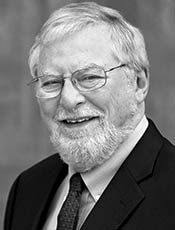Roslyn Lindheim, who joined the UC Berkeley architecture faculty in 1963, was a pioneer in patient-centered healthcare architecture and the first architect to be elected to the National Academy of Science’s Institute of Medicine. In a review of Architecture for the Community Mental Health Center in the American Journal of Public Health and the Nation’s Health in 1969, she noted some dissonance between the interests of architects and those of healthcare providers and patients:
 Perhaps because I am an architect trying to teach the primary function of user requirements, most of the statements of the psychiatrists make a good deal more sense than those of the architects. I respond with uneasiness to phrases such as “continuous form is like human behavior” or “when physical cubes are present but ambiguous, they lead to disrupted ego feeling, disorientation and anxiety.” This is neither verified nor leads in systematic fashion to building solutions.
Perhaps because I am an architect trying to teach the primary function of user requirements, most of the statements of the psychiatrists make a good deal more sense than those of the architects. I respond with uneasiness to phrases such as “continuous form is like human behavior” or “when physical cubes are present but ambiguous, they lead to disrupted ego feeling, disorientation and anxiety.” This is neither verified nor leads in systematic fashion to building solutions.
Her colleague, S. Leonard Syme, PhD, Professor Emeritus in the School of Public Health at UC Berkeley, who is considered by many to be the father of modern social epidemiology, recalls their subsequent collaboration:
 I joined the faculty of the Epidemiology Division in the School of Public Health at Berkeley in 1968. My job was to introduce in epidemiology, for the first time in the world, the idea that social factors affect health. In one of my classes in 1971, a young man came up to me after class and said, “You need to meet my mother!” When I did meet her, she turned out to be Roslyn Lindheim, a Professor of Architecture at Berkeley. She was working on the same issues as I was, but her focus was on design. We subsequently developed a course called “Environmental Design, Stress and Disease,” which was attended in equal numbers by students in Public Health and Architecture. This was an amazingly successful course that had a profound impact on students. We decided to summarize the content of the course in the 1983 paper, “Environments, People and Health.” A few years later, Roslyn became ill, and she died in 1987. Her family later established a memorial trust to support graduate students to continue her work. The ideas we worked on many years ago are now mainstream around the world.
I joined the faculty of the Epidemiology Division in the School of Public Health at Berkeley in 1968. My job was to introduce in epidemiology, for the first time in the world, the idea that social factors affect health. In one of my classes in 1971, a young man came up to me after class and said, “You need to meet my mother!” When I did meet her, she turned out to be Roslyn Lindheim, a Professor of Architecture at Berkeley. She was working on the same issues as I was, but her focus was on design. We subsequently developed a course called “Environmental Design, Stress and Disease,” which was attended in equal numbers by students in Public Health and Architecture. This was an amazingly successful course that had a profound impact on students. We decided to summarize the content of the course in the 1983 paper, “Environments, People and Health.” A few years later, Roslyn became ill, and she died in 1987. Her family later established a memorial trust to support graduate students to continue her work. The ideas we worked on many years ago are now mainstream around the world.
Lindheim and Syme’s article appeared in the Annual Review of Public Health and is available as a PDF, free of charge, from the website of Annual Reviews, “a nonprofit publisher dedicated to synthesizing and integrating knowledge for the progress of science and the benefit of society”: “Environments, People and Health.”
From arcCA DIGEST Season 03, “Health.”





